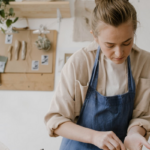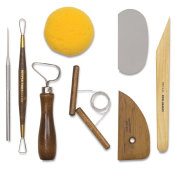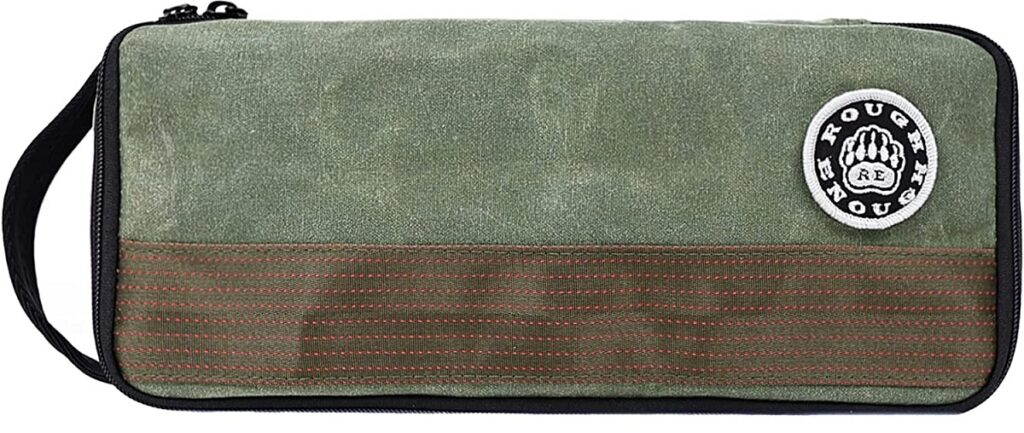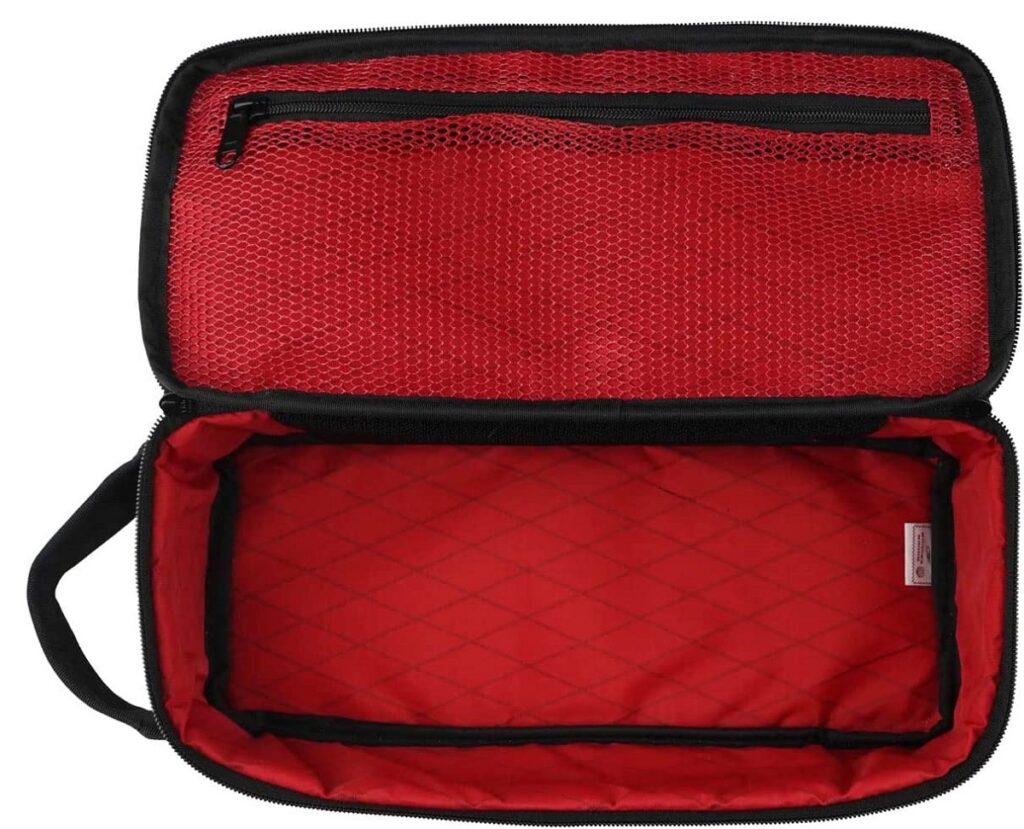So you’ve signed up for beginning pottery. Congratulations! But, now what?
If you’re wondering what to expect at your first pottery class, this guide will help ensure you’re prepared to make the most of your experience in the studio. Read on to answer the question, “What should I know before my first pottery class?”
Read on for tips and advice you’ll appreciate, before you even enter the studio! And welcome to the world of pottery and ceramics… you’re going to like it here.
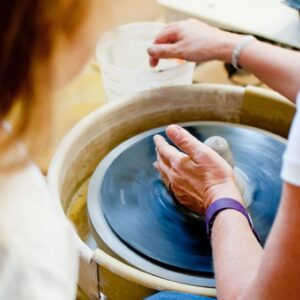
If you’re eagerly awaiting your first pottery class, you’re in the right place!
More often than not, the answer is that you don’t need to bring much to your first class. Wherever you’re taking your class (whether it’s at a local arts center, university or private studio), they most likely have tools and supplies that you can use while you’re there. But if you’re wondering what to expect at your first pottery class, and want some tips… there are a few items that are nice to have (of your own)… and we’ll tell you all about them.
Your First Pottery Class: What Do You Need Before Beginning Pottery?
If you’re looking for the quick and dirty summary (pun intended, because pottery is DIRTY!), these are the top 3 items you might consider purchasing (or rounding up) before your first pottery class:
This page uses affiliate links. When you purchase using links on this site, we many earn a commission. As an Amazon Associate, I earn from qualifying purchases.
Pottery and ceramics classes are seeing a resurgence. In my area, classes are full (and have wait lists!) It may be the result of people finding more balance and making more time for creative projects post-pandemic.
It might also be because people are inspired to take their first pottery class after seeing The Great Pottery Showdown on HBO… but whatever has led you here, ready on for some great tips before your first pottery class!
What Will A Beginning Pottery Class Cover? – What To Expect At Your First Pottery Class
Hand Building
A beginning pottery class is likely to begin with some background in clay hand-building skills. This will get you familiar with the clay that is being used by the studio, and introduce you to techniques like pinch pots, coil building, and slab building.
People are often eager to get straight into wheel throwing class, but unless your class is specifically designated as a wheel-throwing class, you should know that in a beginning pottery class, you’re likely to have a few sessions in hand building techniques before they sit you in front of a potter’s wheel.
Hand building techniques are more approachable, get you working with clay quickly… and will get you comfortable with the studio and materials and tools you’ll be working with, before you’re overwhelmed with the more complicated techniques associated with throwing at the wheel.
Kiln + Studio Basics
When you attend your first pottery class, it’s likely you’ll get a tour of the studio. You’ll learn where they keep tools, how they like to store pieces, where to find the equipment you’ll be using, and whether there are any particular rules to follow in the studio.
Every studio is different, so although you’re eager to get your hands in the clay, it will be helpful to pay attention to how your particular studio is run, and what rules are in place there.
Most studios will offer students an area to store their creations, as you’ll be working on pieces over several sessions in order to finish them.
Intro To Wheel Throwing
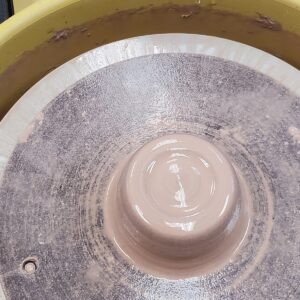
Once the intro sessions are complete, and you’ve had your hand-building lessons, it’s likely that your class will cover wheel throwing next.
This is what most students look forward to the most, and is an exciting and fun way to interact with clay.
Often times, the instructor will offer a step-by-step demonstration for the whole class that covers beginning pottery basics for the potter’s wheel. This type of demonstration will likely cover:
- Wedging the clay to prepare it for throwing
- Placing the clay on the wheel/bat
- Coning and Centering
- Basic throwing demo (usually of a cylinder-shaped vessel for beginners)
What Items Do I Need For My First Beginning Pottery Class
There’s a good chance that your beginner ceramics class / studio will have everything you need to participate. But there are three main things that are worth considering as a purchase. While certainly not necessary, it can be helpful and convenient to have certain items of your own.
In the ceramics studio, there are 3 main things that come to mind when considering what items new Potters might consider purchasing (or rounding up) before their first pottery class.
1. Apron or Bib Overalls
Because clay is so messy to work with, and studios have many students coming and going, you may find that they do not have aprons available for you to use. Keeping them clean and available for students can be too much work, so some studios just ask that you come dressed to get dirty (or bring your own Potter’s Apron / Bib Overalls for pottery).
We have a great round up of some pottery appropriate, but budget-friendly aprons and bib overall options in this article if you’d like to look at a number of great options for the ceramics studio (for both men and women).
A Budget Friendly Pottery Specific Apron Option Is This Claypron:
This Potter Specific Split Apron Is Ideal For Wheel Throwing
While most any apron will do (you’re just trying to protect your clothing from clay and splashing)… this pottery specific option is a great choice for the ceramics studio. It’s especially great for throwing on the wheel, with its split-leg design that’ll guard you from splatter, but not get in your way at the wheel.
2. A Basic Set Of Pottery Tools
These tools need not be expensive. They’re pretty basic… and we’re sure your studio will have tools for you to use. But if you find that they’re in high demand, it can be nice to have a set of your own.
At a minimum, you’ll want the following:
- A Sponge
- A Potter’s Rib
- A Scoring Tool
- A Wire-Cutting Tool (for cutting clay from the block)
- A Clay Trimming Tool
- A Needle Tool
If You’re Looking For An Affordable All-In-One Pottery Tool Kit:
Basic 8-Pc Pottery + Clay Tool Set
This set has most of the tools you’ll need for a beginner pottery class, for both hand building and wheel throwing basics. It’s affordable, too!
3. A Tool Bag To Keep Your Pottery Tools Organized
The final item you might consider is a tool bag to keep yourself organized (and your tools collected so you don’t lose them). Your studio may provide you with a sponge and clean up rag. If you’re lucky, you might even get some basic tools of your own, or you can always but a set like the one above.
We have a great round up of some pottery appropriate tool bags in this detailed article, if you’d like to look at a number of great options for keeping yourself organized (and your tools handy) in a beginning pottery class.
This Water Resistant Zipper Tool Bag Is A Great Option + Size For Pottery Tools!
This Top-Opening Zippered Tool Bag Is Just The Right Size For Pottery Tools
Waterproof and sturdy, it keeps your tools easy to access while working, and has an easy carry handle for toting back-and-forth from the studio.
What Should I Know About Clay Before My First Pottery Class?
Pottery Jargon – Terms To Know When Beginning Pottery
There’s a LOT of jargon, when it comes to Pottery + Ceramics, so you’re not alone if you’re hearing terms that you’ve never heard before! If you want to arm yourself with some basic pottery jargon before your first pottery class, you might find this article especially useful!
Ceramics Terms You Might Not Know: Your Guide To The Jargon of Ceramic Pottery
When you start out as a beginner in the big wide world of Ceramic Pottery, it won’t take long before you come across some Potter’s jargon or Ceramics terms that are unfamiliar.…
Continue Reading Ceramics Terms You Might Not Know: Your Guide To The Jargon of Ceramic Pottery
Tips For Your First Pottery Class – Things You Might Not Know When Beginning Pottery!
Pots Have To Be Fired Twice
Beginners might not realize that before you have a finished piece of pottery, it will actually go through two firings in the kiln! The first firing take the clay from greenware to bisqueware. After the bisque fire is when you apply glaze.
The final firing (after glazing) is when you’ll have a finished piece of pottery to take home!
The Studio May Not Allow Outside Clay
You might be surprised to learn that studios may not allow outside clay. Various clay bodies will fire at varying temperatures, so to keep things consistent, studios will sometimes limit the types of clay allowed (or simply not allow outside clay).
This will prevent mixing of clay types when recycling clay for re-use, and it will also ensure that the glazes the studio offers to students are suitable for the clay type (and vice-versa).
You Might Need Your Own Apron – Dress To Get Dirty When Beginning Pottery!
If a studio is small, they may not have the capability to keep aprons washed and available for all of their students. To be safe, dress for your first pottery class in clothes that you don’t mind getting dirty (or bring your own pottery apron!)

